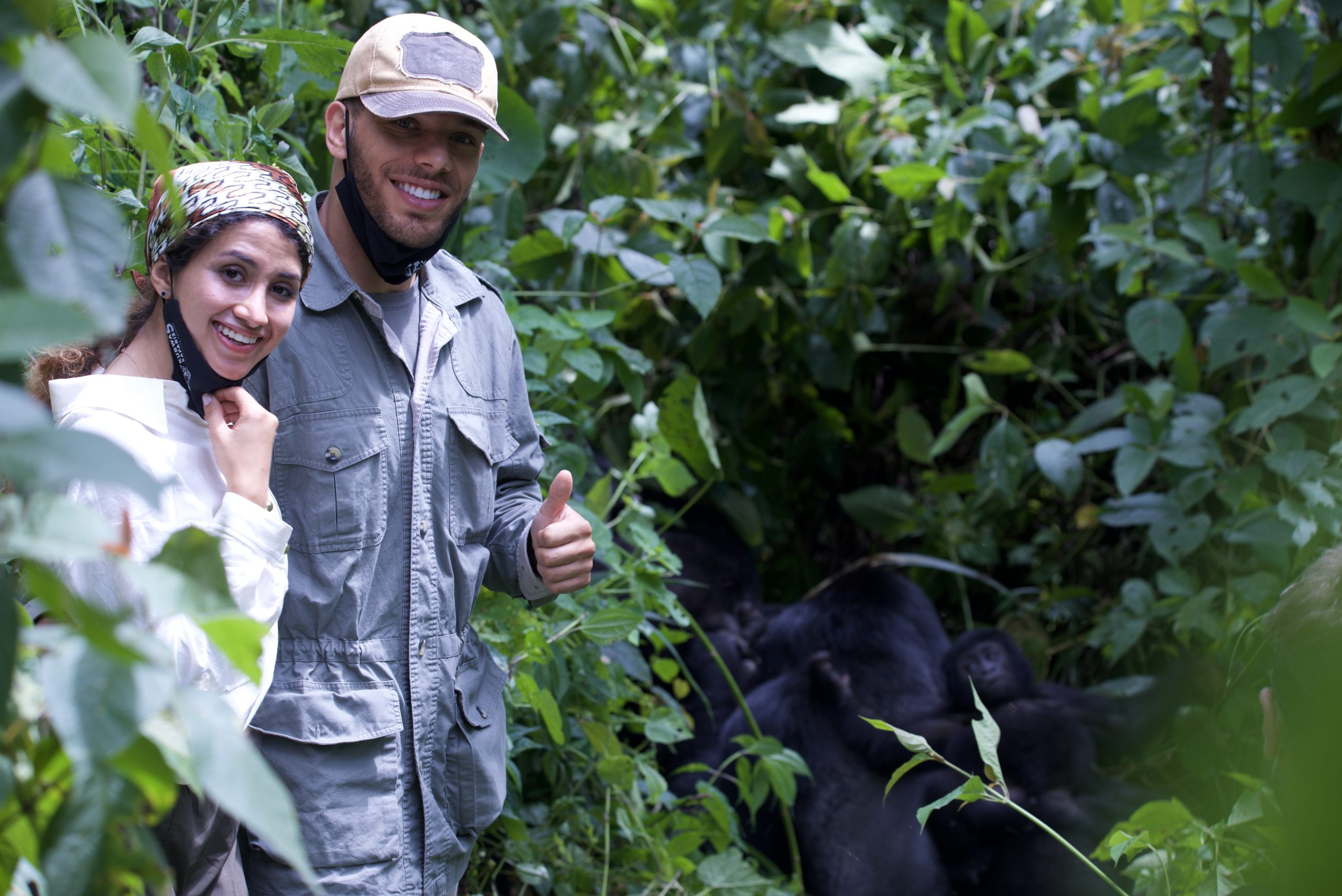Table of Contents
Guide To Trekking Gorillas In Uganda 2023/2024
Trekking gorillas in Uganda or gorilla trekking in Uganda is a once-in-a-lifetime wildlife encounter.
Imagine coming eye-to-eye with the largest and the most charismatic of the great apes, the mountain gorillas. What makes Uganda gorilla safaris or Uganda gorilla trekking tours so special is that these gentle giants are so closely related to us. Only 1.6% is the difference in our nuclear DNA.
Mountain gorillas are also very rare and endangered. About 1063 are left on Earth. And more than half of them live in Uganda. Rwanda and DR Congo are the only other countries where you can see these big apes.
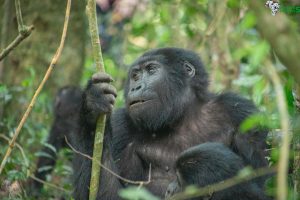

Sadly, due to overpopulation, their habitat is shrinking. By booking a gorilla trek Uganda tour, you’re contributing to the fight for survival of these magnificent creatures.
Bwindi and Mgahinga Gorilla Parks are the 2 regions for trekking gorillas in Uganda. Gorillas live in families of usually 5 to 30 members. Bwindi is a proud home of 22 habituated gorilla families and Mgahinga has one.
Gorilla families of Bwindi Impenetrable National Park reside in the 4 different sectors of the park. Each sector of Bwindi act as a self-standing gorilla trekking destination.
With several habituated gorilla families located in different regions, it can become confusing to understand the exact logistics of your Uganda gorilla trek. This guide is intended to explain how gorilla trekking in Uganda works, Uganda gorilla trekking regions, gorilla families, & other useful information.
How Gorilla Trekking In Uganda Works
You need a permit to trek the gorillas of Uganda.
The permits for trekking gorillas in Uganda are available for purchase up to 2 years in advance.
You buy the gorilla trekking permit directly from the Uganda Wildlife Authority (UWA), which is in charge of protecting Uganda’s wildlife inside the National Parks. It is, however, highly recommended that you buy your Uganda gorilla permit through a registered Uganda tour company or tour operator.
You can purchase your Uganda gorilla trekking permit for any of the trekking region or sector. You have to specify in which region or sector you would want to trek gorillas.
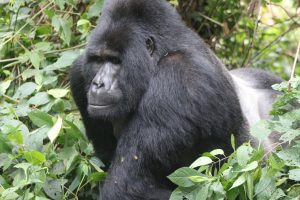
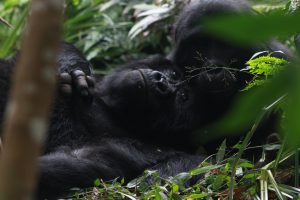
Once you have decided on a date and region/sector for your Uganda gorilla trek and availability has been confirmed, a non-refundable deposit of 30% is required to reserve your gorilla permit.
Your permit for trekking gorillas in Uganda is held with UWA until you have paid in full.
According to the current regulations, the latest this can be done is one month prior to the trek date.
There is a limit of one trek each day per gorilla family.
During the pre-gorilla trekking briefing, guests are divided into suitable groups for trekking each gorilla family. This is arranged by UWA.
A maximum of 8 visitors are allowed to trek a gorilla family, at a time.
If you wish to see a specific mountain gorilla family, a nearby family, or interested in a short gorilla trek, you can make a special request, although this cannot be guaranteed. Please be sure you notify your safari guide of these needs. They’ll liaise with Uganda Wildlife Authority on your behalf.
Gorilla families in Uganda are territorial. And your briefing guide will discuss where each gorilla family has been roaming ‘recently’. As such hopefully, you’ll be given an estimate of how long the trek will take to find them, although this is not always the case.
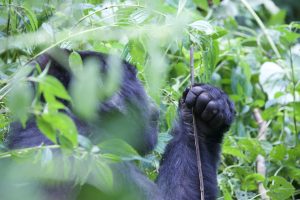
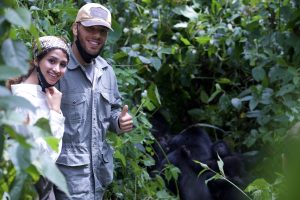
UWA staff manages all aspects of trekking gorillas in Uganda. You’ll be accompanied by security personnel, a ranger guide, and trackers, with optional porters – who walk with you until a gorilla family is located.
Porters are people from the nearby local communities, rotated for revenue sharing which goes directly to them. We highly recommend at least one porter each trekker.
Usually, porter fees are additional to your Uganda gorilla trekking cost, and paid direct.
On encountering the gorillas, your ranger guides only take you closer to the gorillas. And your viewing time begins – which is a maximum of 1 hour.
Your Kubwa Five Safaris Guide does NOT accompany you when trekking gorillas in Bwindi or Mgahinga, unless you have arranged and would like to pre-purchase him a gorilla trekking permit.
Regions For Trekking Gorillas In Uganda And Gorilla Families In Each
Bwindi Impenetrable National Park
Bwindi Impenetrable National Park is the number one region for trekking gorillas in Uganda.
The park lies on the edge of the Rift Valley in southwestern Uganda. Its mist-covered hillsides are covered by one of Africa’s oldest and most biologically diverse rainforest, which dates back over 25,000 years.
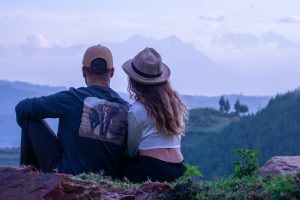
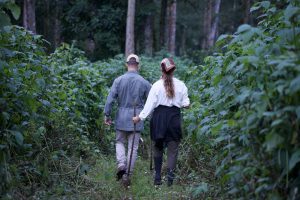
Famously, this “Impenetrable Forest” of 321km2 also protects about 459 or the world’s 1063 Mountain gorillas. Bwindi has 22 habituated and some semi-habituated gorilla families.
This biologically diverse region also provides protects a further 120 species of mammal. There are over 350 bird species in the forest, including 23 Albertine Rift endemics.
Bwindi features 4 different sectors. Each sector acts as a different destination from which you trek gorillas. And each sector is named after the surrounding villages.
Here Are The Four Gorilla Trekking Sectors of Bwindi:
-
Buhoma Sector (Northern Bwindi)
Buhoma is the most visited sector of Bwindi. It is also the largest of the four sectors. The sector offers a variety of accommodation at different levels, including luxury, mid-range, and budget.
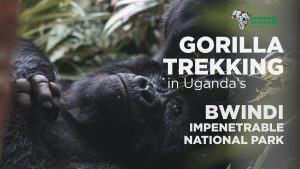
As the first area of the park to open to visitors, it is where the first gorilla family (Mubare) was habituated in 1992. In addition to gorilla trekking in Buhoma, you can also tour the neighboring village communities, do bird watching or hike some of Africa’s most scenic forest trails.
There is also an opportunity for Batwa Cultural Experience. The Batwa People were the original inhabitants of the Bwindi Forest. They were evicted from their natural environment when the national park was gazetted in 1991. Currently, there are 6 gorilla families in Buhoma, including:
- Mubare Family: 9 members with 1 silverback
- Habinyanja Family: 19 members with 1 silverback
- Rushegura Family: 13 individuals with 1 silverback
- Katwe Family: 9 individuals with 1 silverback
- Muyambi Family: 8 individuals with 1 silverback
- Binyiindo Family: 7 members with 1 silverback and on final stages of habituation process
-
Ruhija Sector (Eastern Bwindi)
Usually accessed from Buhoma area, Ruhija is the second most visited area after Buhoma sector.
Ruhija provides accommodation mainly in mid-range and budget options. In addition to trekking gorillas , avid hikers can ascend to the top of Rwamunyonyi Peak – “the hill of many birds”.
It is Bwindi’s highest point and offers breathtaking views. As its name suggests, the forests around Rwamunyonyi provide some of the greatest bird-watching in Bwindi Impenetrable Forest.
In Ruhija, you also have an opportunity for village community tours to meet some of the Batwa Pygmy People.
The Batwa here offers demonstrations of the use of medicinal plants found in Bwindi forest and their other ancient survival skills practiced by them for thousands of years.
Although elephant sightings in Bwindi are uncommon, this sector offers the best chance of spotting one of these elusive grey ghosts. Ruhija currently has four habituated gorilla families, including:
- Mukiza Family: 16 individuals with 1 silverback
- Oruzogo/Kasumali Family: 11 members with 3 silverbacks
- Kyaguliro Family: 10 members with 1 silverback
- Bitukura Family: 13 members with 2 Silverbacks
-
Rushaga Sector (Southern Bwindi)
Rushaga Sector’s major drawcard is that a Gorilla Habituation Experience is offered for Bikyingi Gorilla Family.
This special Uganda safaris adventure allows guests to spend up to 4 hours with the gorilla family, rather than the standard 1 hour. Rushaga also includes Lake Mutanda; you can set out on a canoe ride for an entirely different perspective of the stunning scenery.
The sector can be reached by road from a variety of lodges in the Rushaga/Mutanda/Kisoro (southern) side of Bwindi Impenetrable National Park. There are currently 9 gorilla families in Rushaga, including Kahungye – the largest of all the Bwindi gorilla families:
- Kahungye Family: 25 members with 3 silverbacks
- Kutu Family: 20 members with 2 silverbacks
- Bweza Family: 14 members with 3 silverbacks
- Posho Family: 13 members with 1 silverback
- Mucunguzi Family: 13 members with 1 silverback
- Shongi Family: 12 members with 1 silverback
- Bikyingi Family: 11 members with 1 silverback
- Busingye Family: 10 members with 1 silverback
- Mishaya Family: 7 members with 1 silverback
-
Nkuringo Sector (Western Bwindi)
Nkuringo is the most scenic section of Bwindi Impenetrable National Park.
However, the dramatic landscape and spectacular views of the Virunga Volcanoes from this sector do come at a physical cost. This particular region is better suited to more physically active visitors.
The terrain of Nkuringo offers a tough hike, particularly the uphill trek to return to the trail head after viewing the gorillas. You can access this sector access is from a variety of budget, mid-range and luxury lodges in Nkuringo/Lake Mutanda areas.
Nkuringo currently has three habituated gorilla families, including:
- Nkuringo Family: 12 members – Blackback currently in charge
- Bushaho Family: 11 members with 1 silverback
- Christmas Family: 7 members with 1 silverback
Mgahinga Gorilla National Park
Mgahinga Gorilla National Park is separate from Bwindi.
Situated in Uganda’s south-western corner on the borders of Rwanda (Volcanoes National Park) and the Democratic Republic of Congo (Virunga National Park), this 33km2 park protects the vital Uganda portion of the volcanic Virunga Mountains.
The Virunga consists of 8 volcanoes, of which 3 are in Mgahinga National Park.
All three of the Virunga volcanoes in Mgahinga Gorilla National Park have long since retired from spewing lava (though there are 2 active volcanoes in the range in the neighboring Democratic Republic of Congo ), but their presence in the park is no less stunning for their dormancy.
There is just one habituated gorilla family in this area.
But the park is home to troops of golden monkeys. These playful monkeys are almost as rare as their mountain gorilla cousins and are endemic to the Virunga area. There are several nearby lodges of varying levels, in the Mgahinga National Park area, or Kisoro/Lake Mutanda area.
- Nyakagezi Gorilla Family: 10 members with 3 silverbacks
15 Frequently Asked Questions About Trekking Gorillas In Uganda
-
What Is Gorilla Trekking?
Gorilla trekking entails hiking through dense forests in search of a family of habituated wild gorillas with a knowledgeable local guide.
Gorilla trekking is awesome and provides tourists with lifelong memories to share. Currently, Uganda, Rwanda, and Congo are African countries that offer this activity.
-
Can Children Go Gorilla Trekking In Uganda?
Gorilla trekking with children (kids); recently, it has become a concern for families planning for Uganda holidays with Gorilla trekking on the itinerary while having children that are under the age of 15.
The big question, then, is always whether or not our boy (s)/girl (s) will be allowed to go on the trek or what is the minimum age for Gorilla trekking?
First off, UWA recommends a minimum age of 15 years old for trekking gorillas in Uganda. However, if you asked me, are kids under 15 allowed to go gorilla trekking in Uganda? YES will be the response!
But the parents of the kids will be required to sign an indemnity form by the park warden. This is done so that in case the child fails to make it through the trek, you’ll not hold it against them.
They will, however, always try to allocate them the gorilla family that is known to be closer. Therefore, there hasn’t been a single instance of a child not completing the trek!
The other way to do it is by hiring porters. This is the simplest way for kids to go gorilla trekking and these will carry the kids through the trek. Children under 10 are strongly discouraged from entering the Bwindi Impenetrable Forest, even though those under 15 are permitted to trek.
Read More: Tips for Planning A Safari in Uganda With Kids
-
Are Gorilla Sightings Guaranteed When Trekking Gorillas In Uganda?
Mountain gorillas roam freely throughout their territory, making it occasionally challenging to locate them.
Before beginning any gorilla trekking tour in Uganda, the head ranger will give you a briefing and will correctly warn you that sightings are not guaranteed. However, the success rate has been 100% in recent years, so you can anticipate seeing the gorillas.
The only reason you may not succeed is if they are not physically up to it and decide to turn back.
However, most reasonably fit trekkers succeed. The guides and porters will make every effort to get you there. And some people are literally pulled and pushed up the mountain slopes.
Bring a walking stick, water, a raincoat, and some snacks to increase your chances of success. Additionally crucial are sturdy hiking boots.
-
When Is The Best Time For Gorilla Trekking In Uganda?
You can go gorilla trekking at any time in Uganda. The best trekking conditions are, however, found in the dry season months of June to September and December to February.
Trails are frequently more slippery and challenging to navigate during the months of the wet season.
It might be disappointing if it rains on the day of once-in-a-lifetime gorilla trekking experience.
In spite of this, the guides make every effort to make the experience memorable. They might decide to wait somewhere until the weather clears up before approaching the gorillas if it is heavily raining.
-
How Difficult Is Gorilla Trekking Uganda?
Trekking gorillas in Uganda can be easy, moderate, or difficult.
It depends on your level of fitness and the movement of the gorillas that day.
The Uganda gorilla trek may require 2 to 7 hours of uphill and downhill hiking in hot and humid conditions, while navigating thick tangles of vines and roots.
When all else fails, you can book a ‘gorilla chair,’ in which case a team of strong men literally carry you on your chair to the gorillas. No matter how physically fit you are, it’s always important to be suitably prepared.
A lot of rain falls in Bwindi all year long. You will therefore need waterproof clothing and sturdy hiking boots. Gloves are not essential, but they are recommended to protect your hands from stinging nettles.
A good walking stick is a must-have on slippery terrain.
There also porters at the trail head to carry your day pack and look after it whiles you are watching gorillas. On the slippery trail, a porter will also be of assistance.
-
How Much Is Gorilla Trekking In Uganda?
The fee for trekking gorillas in Uganda is US$700 per person for foreign non-residents, US$ 600 per person for foreign residents, and US$ 250000 per person for East African Citizens.
This is the fee paid to Uganda Wildlife Authority. The proceeds are used to maintain and develop the protected areas of Uganda. This is only the fee for the activity and doesn’t factor in a lot of other costs involved in a Uganda safari package.
A unique activity offered in Bwindi only is the Gorilla Habituation Experience.
On this special adventure, you will trek a semi-habituated gorilla family in a limited group of 4 travelers instead of 8 on a typical gorilla trek. You will also spend four hours with gorillas instead of one hour time limit given for the ‘normal’ gorilla trekking.
However, viewing is less easy as these gorillas are not yet fully habituated and prefer to keep their distance. The price for this special adventure is US$1500 which is the same price for a normal gorilla trekking perming in Rwanda.
-
Is Gorilla Trekking Worth The Money?
Yes, trekking gorillas in Uganda really worth the money. Nature and wildlife lovers all over the world dream of going gorilla trekking; it is one of the top Africa bucket list experiences! In actuality, it is more than worth it if you can afford it.
-
How Many Days Do You Need For Gorilla Trekking In Uganda?
Uganda gorilla safaris from Entebbe or Kampala take a minimum of 3 days. On day one, you transfer to Bwindi National Park. On day two Gorilla tracking, you do the gorilla trek. And on day three, you transfer back to Entebbe, Kampala or Kigali city in Rwanda from Bwindi.
Read More: 3 day gorilla trekking Uganda
However, you can also do a 2 Days Uganda Gorilla Trek for Kigali (Rwanda).
On the top of offering the exciting opportunity to gorilla trekking in Uganda in the shortest time possible, it helps you reduce the long driving distance of 8-9 hours from Entebbe/Kampala to Bwindi.
Two or three days are really the minimum time required to travel from Entebbe/Kigali to Bwindi and track gorillas. I would, however, recommend spending more time in Uganda as there is a lot more to see and do.
-
Is Gorilla Trekking In Uganda Safe?
It is very safe to go trekking gorillas in Uganda.
With these gentle giants, incidents are very rare.
Despite the fact that the gorillas are habituated to human visitors and accustomed to them, it’s crucial to pay attention during the safety briefing at the beginning.
It goes without saying that you should follow your guide’s instructions, particularly if a gorilla is approaching you. The greatest risk of a gorilla trek may be twisting an ankle on the slick terrain. Before the big day, be sure to break in a good pair of hiking boots.
-
Are Mountain Gorillas Aggressive?
Mountain gorillas are often referred to as gentle giants.
They are not at all aggressive. And it is the only reason they can be approached closely on foot. If they were aggressive, their massive size of over 200 kilograms would make them too dangerous to be close to.
However, Silverbacks or mature male gorillas might sometimes show aggression to other male gorillas. This aggression is for dominance mostly results in a male leaving the family or a family splitting up.
A gorilla may sometimes mock charge tourists. But this has never led to actual injury. Before heading off gorilla trekking tour, you will get a full safety briefing. You will be completely safe if you follow the instructions of your guide.
-
How Close Can I Get To Uganda Gorillas?
You must keep a minimum of 23 feet (7 meters) away from the gorillas when observing them. This is for your own safety as well as to prevent the possibility of exposing gorillas to human diseases.
During the gorilla trekking briefing, you will be how not to behave when around the gorillas. When you actually encounter the gorillas, guide will direct you where to stand. Of course, don’t follow the rules. So they might curiously come much closer to you. Your guide will typically advise you to take a step back.
Sometimes, for example, because of dense vegetation, this is not possible. If that happens, you’ll be instructed to crouch down and look away/divert your gaze until the gorilla has passed.
-
What To Pack For Gorilla Trekking In Uganda?
When planning to go trekking gorillas in in Uganda, we advise you to bring trousers; long sleeved shirts or blouses, long socks to enable you tack in your trousers, a hat, sun glasses, insect repellents, garden gloves, hiking boots, and some energy giving snacks.
Read more: Uganda gorilla trekking packing list.
-
Can I Add A Uganda gorilla trek To A Genera African Safari?
It is easy to add a Uganda gorilla trekking encounter to a general safari in Kenya or Tanzania safari tours, or any other African safari holiday.
A short flight from Kenya or Tanzania gets you to Entebbe, a verdant town on the shore of Africa’s largest lake, Lake Victoria in Uganda. From here you can drive or take a domestic flight to Bwindi Impenetrable National Park.
While gorilla trekking in Uganda fits into an East African safari, you can also slot it into a Uganda safari holiday. The top highlights of Uganda tour packages include the following.
Bwindi or Mgahinga Gorilla National Park for gorilla trekking, Kibale National Park for chimpanzee trekking, and, or Lake Mburo National Park or Queen Elizabeth National Park for a classic savannah big game viewing safaris and the possibility to see tree-climbing lions.
You can also add Ziwa Rhino Sanctuary to track wild rhinos on foot and Murchison Falls National Park for a boat cruise on the Nile and more general wildlife viewing.
-
What Lodges Or Camps Would You Recommend For Uganda Gorilla Safaris?
There are many Uganda safari lodges and tented camps in or near Bwindi/Mgahinga Gorilla National Parks. When choosing where to stay in Bwindi Impenetrable National Park, it is crucial to know there are 4 different sectors in the park.
These four sectors serve as centers from which the trekking to different gorilla families begins.
When booking a permit for trekking gorillas in Uganda for Bwindi, you book for a specific sector. It makes sense to select accommodation at the sector where you will be trekking gorillas.
This is because the sectors are not near each other and gorilla trekking starts at 8.00 prompt. Keeping location in mind, there are many good lodges to choose from. Some of the lodges are out in the villages and some border the national park.
Read More: Best Safari Lodges in Bwindi
-
Is Uganda Or Rwanda Better For Gorilla Trekking?
Mountain Gorillas have a small habitat range extending over Rwanda, Uganda, and Congo (DRC). Between these three countries, four national parks offer mountain gorilla trekking.
Most popular and accessible are Rwanda’s Volcanoes National Park and Uganda’s Bwindi Impenetrable Forest National Park.
The gorilla trekking experience in these two national parks is similar, but there is some differences as well. The big difference is in price. The fee for gorilla trekking in Rwanda is US$1500. In Uganda gorilla trekking costs US$700.
Read More: gorilla trekking uganda vs rwanda Which Country Is Better For Gorilla Trekking Uganda Or Rwanda?

